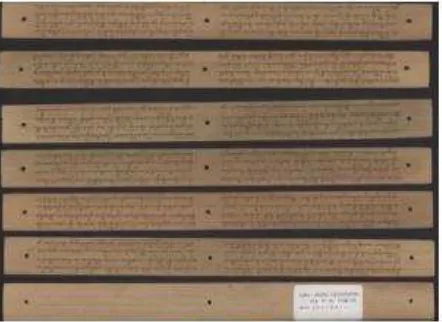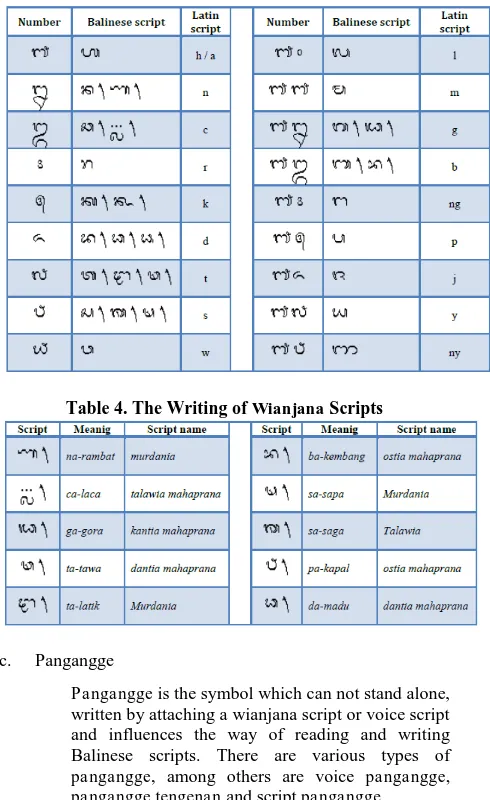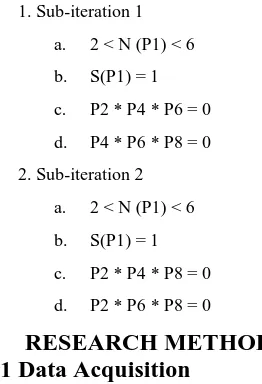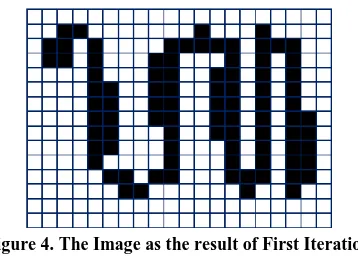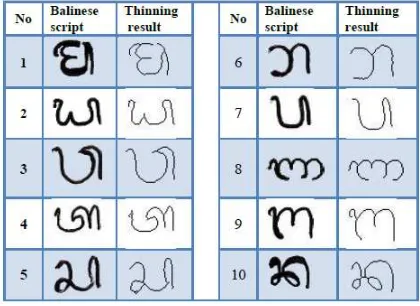Editorial Board
Dr Amr Ahmed
University of Lincoln
Dr. A.K.Banerjee
NIT, Trichy
Dr. Keith Leonard
Mannock
University of London
Dr. Alexandra I. Cristea
University of Warwick
Dr. V. K. Anand
Punjab University
Dr. Rakesh Mishra
University of Huddersfield
Dr. S.Karthik
Anna University
Amol D. Potgantwar
University of Pune
Dr. Neeraj Kumar Nehra SMVD University
Dr. Rajesh Kumar
National University of Singapore
Dr. Sabnam Sengupta
West Bengal university of Technology
D. Jude Hemanth
Karunya University
Dr. A.Govardhan
Jawaharlal Nehru Technological University
Dr. R. Ponnusamy
Vinayaga Missions University
Prof. (Dr.) Yogeshwar
Kosta
CHARUSAT
T.N.Shankar
Jawaharlal Nehru Technological University
Dayashankar Singh
Uttar Pradesh Technical University
Bidyadhar Subudhi
NIT, Rourkela
Dr. Nitin S. Choubey
NMIMS
Rongrong Ji
Harbin Institute of Technology, P.R.China
Anand Kumar
VTU
Dr. A.K. Sharma
Uttar Pradesh Technical University
Dr. Rajeshree D. Raut
SRKNEC
Dr. Vijay H. Mankar
Nagpur University
Atul Sajjanhar
Deakin University
Navneet Tiwari
RGPV
Ashraf Bany Mohammed Petra University
Sheti Mahendra A.
Dr. Babasaheb Ambedkar Marathwada
University
Koushik Majumder
West Bengal University of Technology
Dr.R.Geetharamani
Anna University
Rupali Bhardwaj
UPTU
Gaurav Kumar
Punjab Technical University
Prof. B.Nagarajan
Anna University
Dr H N Suma
VTU
Anu Suneja
Maharshi Markandeshwar University
Aung Kyaw Oo
Defence Services Academy
Dr. Pabitra Mohan Khilar NIT Rourkela
Dr. Anil Upadhyay
UPTU
Cheng Luo
Coppin State University
Harminder S. Bindra
PTU
Santosh K. Pandey
The Institute of Chartered Accountants of India
Dr. S. Abdul Khader Jilani University of Tabuk
Kamaljit I. Lakhtaria
Saurashtra University
Dr. Anirban Kundu
West Bengal University of Technology
Dr Pramod B Patil
RTM Nagpur University
Dr. Debasis Giri
WBUT
Deo Prakash
Shri Mata Vaishno Devi University
Rakesh Lingappa
VTU
P. Vasant
University Teknologi Petornas
Yuanfeng Jin
YanBian University
Rajesh K Shukla
RGPV
Dr.S.Radha Rammohan
D.G. of Technological Education
Prof. Hari Mohan Pandey NMIMS University
Prof. Kanchan Sharma
GGS Indraprastha Vishwavidyalaya
Dr. S. Poornachandra
Anna University
Dr. R. Uma Rani
University of Madras
Dr. V.B. Singh
University of Delhi
Hemant Kumar Mahala
RGPV
Dr. Debnath
Bhattacharyya
RCC Institute of Information Technology
Dr A.S.Prasad
Andhra University
Deepak Joshi
IIT Delhi
Dr. P K Singh
U P Technical University
RK Tiwari
U P Technical University
Dr. Himanshu Aggarwal
Punjabi University
Dr. K.D. Verma
S.V. College of Post Graduate Studies &
Research
R.Amirtharajan
SASTRA University
Md. Rajibul Islam
University Technology Malaysia
Dr.S.Hariharan
Anna University
Dr.S.Sasikumar
HCET
Dakshina Ranjan Kisku
West Bengal University of Technology
A.K.Verma
TERI
Vikas Singla
PTU
Dr. Udai Shanker
UPTU
Dr Lefteris Gortzis
University of Patras
Suhas J Manangi
Microsoft
Mahdi Jampour
Kerman Institute of Higher Education
Prof. D S Suresh
Pune University
Prof.M.V.Deshpande
University of Mumbai
Dr. Vipan Kakkar
Shri Mata Vaishno Devi University
Dr. Ian Wells
Swansea Metropolitan University
Prof. S.K. Nanda
BPUT
Yongguo Liu
University of Electronic Science and
Technology of China
Prof. Surendra
Rahamatkar
Venkteshwar Institute of Technology
Prof. Shishir K. Shandilya RGPV
M.Azath
Anna University
Anna University
Liladhar R Rewatkar
RTM Nagpur University
R. Jagadeesh K
Anna University
Amit Rathi
Jaypee University
Dr. Dilip Mali
Mekelle University
Dr. Paresh Virparia
Sardar Patel University
Morteza S. Kamarposhti Islamic Azad University of Firoozkuh
Dr. D. Gunaseelan
Directorate of Technological Education, Oman
Dr. M. Azzouzi
Ziane Achour University of Djelfa
Dr. Dhananjay Kumar
Anna University
Jayant Shukla
RGPV
Prof. Yuvaraju B N
VTU
Dr. Ananya Kanjilal
West Bengal University of Technology
Daminni Grover
IILM Institute for Higher Education
Vishal Gour
Govt. Engineering College
Monit Kapoor
University of Petroleum & Energy Studies
(UPES)
Dr. Binod Kumar
JSPM's, Jayawant Technical Campus, Pune
Amit Kumar
Nanjing Forestry University
Dr.S.R.Suresh
Anna University
Dr.Mallikarjun Hangarge Gulbarga University
Gursharanjeet Singh
LPU
Dr. R.Muthuraj
PSNACET
Mohd.Muqeem
Integral University
Dr. Chitra. A. Dhawale
Symbiosis Institute of Computer Studies and
Research
Dr.Abdul Jalil M. Khalaf University of Kufa
Viranjay M. Srivastava
Jaypee University of Information Technology
R.Indra Gandhi
Anna University
V.B Kirubanand
Bharathiar University
Mohammad Ghulam Ali Indian Institute of Technology, Kharagpur
Dr. D.I. George A.
Jamal Mohamed College
Kunjal B.Mankad
ISTAR
Raman Kumar
PTU
Lei Wu
University of Houston
–
Clear Lake
G. Appasami
Anna University
S.Vijayalakshmi
VIT University
Dr. Gurpreet Singh Josan PTU
Dr. Seema Shah
IIIT, Allahabad
Dr. Wichian
Sittiprapaporn
Mahasarakham University
Chakresh Kumar
MRI University
Dr. Vishal Goyal
Punjabi University
Dr. A.V.Senthil Kumar
Bharathiar University
R.C.Tripathi
IIIT-Allahabad
Prof. R.K. Narayan
B.I.T. Mesra
Dr.B.Muthukumaran
Gemini Communication Ltd, India
Xiaolong Jin
Chinese Academy of Sciences, China
Dr. Dharm Singh
MPUAT, India
Feng Li
Cornell University, USA
Dr. Asoke Nath
St. Xavier's College, India
Dr. S. Jaganathan
R. V. S. College of Engineering and
Technology, India
IJCA is now being indexed with
EBSCO
Google Scholar
Informatics
ProQuest CSA Technology Research Database
NASA ADS (Harvard Univ.)
CiteSeer
UlrichWeb
ScientificCommons (Univ. of St Gallens)
University of Karlsruhe
Germany
#
Article Title
Authors : Jerome Addah, Stephen Apanga
2
Quartic Spline Interpolation
Authors : Y. P. Dubey, K. K. Paroha
3
The Thinning Zhang-Suen Application Method in the Image of Balinese Scripts
on the Papyrus
Authors : Made Sudarma, Ni Putu Sutramiani
4
The Identification of Balinese Scripts' Characters based on Semantic Feature and
K Nearest Neighbor
Authors : Made Sudarma, I Wayan Agus Surya Darma
5
A User Identification Technique to Access Big Data using Cloud Services
Authors : Manu A R, V K Agrawal, K N Balasubramanya Murthy
6
A Study of Liveness Detection in Face Biometric Systems
Authors : S. Hemalatha, Amitabh Wahi
7
Design of a Node for an Underwater Sensor Network
Authors : Abraham Varughese, Seetharamiah. P
8
Achieving Convergence through Deployment of IPTV in Cellular Network
Authors : Nazmus Sakib, Hasib-bin-shakur, Tanveer M. Haque
1
Building Clinical Decision Support Systems for Clinical Practice in Poor Settings:
Critical System Features
ԳՇՄՍՅԽԫՍՅԺԽՊԞՈՊՁՄ
International Journal of Computer Applications (0975 – 8887) Volume 91 – No 1, April 2014
9
The Thinning Zhang-Suen Application Method in the
Image of Balinese Scripts on the Papyrus
Made Sudarma
Computer System and Informatics Department of Electrical Engineering Faculty of Engineering, Udayana University
Bukit Jimbaran Campus, Bali, Indonesia
Ni Putu Sutramiani
Magister Program of Elctrical Engineering, Udayana University Graduate Program
Jl. PB Sudirman, Denpasar 80232 Bali - Indonesia
ABSTRACT
One of the cultural heritage which are now starting to be forgotten is the papyrus library. Balinese papyrus is one of the media to write the ideas from minstrels in ancient times. Currently, many of ancient literature that written in papyrus very difficult to identify because the writings were beginning to rot or fade influenced by age. The introduction of Balinese scripts on papyrus can be done first by performing papyrus digitalization. The papyruses are scanned to become one image file. Further the papyrus image is done by Thresholding since prior to the thinning process it is required a binary image. The application of Thinning Zhang-Suen method is very effective because from the original image with 2 sub iteration until yielding in 1 pixel. The benefits of this research is to improve the quality of the image and further segmented to read papyrus making it easier to read text on the papyrus.
Keywords
Balinese scripts, Papyrus digitalization, Thresholding, Binary, image, Thinning Zhang-Suen
1.
INTRODUCTION
Papyrus is a literature work (the paper which has good quality, fine, and beautiful) that often teaches us about life philosophy, religion, and many other knowledge which is very useful for us as a provision of life, so that we as young generation it is very important to understand and take care of papyrus. But the problem in understanding papyrus is that papyrus is considered sacred for Hindus in Bali. Not everyone can read and understand papyrus, considering the difficulty to read Balinese scripts on the papyrus. Besides for longer period the papyrus will be susceptible for damage.
The crucial issue which is papyrus damage encourages the author to preserve by way of papyrus digitalization and also wish to improve the quality of papyrus image. In this study, the author wants to conduct a research about the Application of Thinning Zhang-Suen Method for Balinese scripts on Bali’s papyrus.
The research regarding papyrus had been existed about clearing up the noise in papyrus [1]. The other research also investigates about morphology operation in hand written from documents of Canada [5]. From those studies the author tries to make research about the Application of Zhang-Suen Method for Balinese scripts on Bali’s papyrus.
2.
FUNDAMENTAL THEORY
2.1
Papyrus
One of our ancestor’s cultural legacies which have important value is ancient manuscripts. All over Indonesia it is known that there are lots of ancient manuscripts written in various scripts and languages. Most of the manuscripts still stored or
owned by ordinary people. The others are existed in central and regional agencies, and traditional institutions.
Papyrus is one of the form of ancient manuscripts existed in Indonesia. Papyrus is found abundant in Bali island, but some is found in Java, Sulawesi (called lontara), and in Lombok. Papyrus was used as a media for writing at the time when people had not found paper. Besides the papyrus there was a material resembled with papyrus used as the media for writing, as in Java was using palm leaves (similar with papyrus), dluwang (from barks), and perkamen (from goatskin), in Sulawesi they were using bamboo (written in a circle) and rattan, meanwhile in Batak besides papyrus also there was tribak (from barks).
Figure 1. Wariga Palalubangan Papyrus, Library of Hindu Dharma Institute Denpasar
2.2 Spelling of Balinese Language
According to the decision of Pasamuhan Agung the spelling of Balinese language with Latin alphabets was adjusted with the spelling of Indonesian language [2]. It meant that the spelling was made as simple as possible and the spelling should be phonetic, it meant that it should precise or close to the actual pronunciation. Based on the things mentioned above, then it was stipulated that the letters used to write Balinese language with Latin alphabets were as mentioned below:
International Journal of Computer Applications (0975 – 8887) Volume 91 – No 1, April 2014
10 Table 1. Voice Scripts
If Balinese letters in this case are Voice Scripts which exist now is written with Balinese Latin writing it will be as follows:
Description:
Wisargaha (with the verb) is written the same with
akara.
Suara dirga (ulu sari, suku ilut, and so on) is equalized and written with hrasua scripts (short).
The writing between pepet and taling is equalized (has been adjusted with EYD).
The form of double voice scripts: ai / ia = e(taling)
and au / ua = o (taken the form of code only). According to the experts, it is stated that the words written with wisarga ha, in general are the words originated from Bali (considered as Balinese), meanwhile the words written with a kara are the words not originated from Bali (Ancient Java or Sanskrit). In connection with that, so:
Table 2. The Substitution of Voice Scripts.
b. Wianjana Scripts (consonants): h, n, c, r, k, g, t, m, ng, h, s, w, l, p, d, j, y, ny (18 letters).
The number of Balinese Latin scripts is equal to the number of ha, na, ca, ra, ka, Bali (18 letters).
Writing
(Da madu, murdania) does not have a separate form, in contrast to Ancient Javanese Latin scripts. The naming of
wianjana scripts with the term of dantia and murdania is stated incorrect. The correct one is besides the common names also it is expected to use the term in accordance with the name of pakadangan aksara (articulation area).
Table 3. Wianjana Scripts
Table 4. The Writing of Wianjana Scripts
c. Pangangge
Pangangge is the symbol which can not stand alone, written by attaching a wianjana script or voice script and influences the way of reading and writing Balinese scripts. There are various types of
pangangge, among others are voice pangangge,
pangangge tengenan and script pangangge.
2.3 Local Adaptive Thresholding
Thresholding process or also called threshold will result in binary image, namely the image which has two grayscale values that is black and white [3]. The threshold process of grayscale image to generate a binary image in general is as follows:
�
,
=
1
�
,
≥ �
0
�
,
<
�
………..…… (1)International Journal of Computer Applications (0975 – 8887) Volume 91 – No 1, April 2014
11
�
=
, �∈� ,�
− �
,
� �
,or………….………. (2)
�
=
��
{
,
, ( , )
∈ �
}
………….. (3)�
=
max , , , ∈� +min{ , ,( , )∈�}2 . (4)
With W represents the processed blocks, Nw represents the amount of pixels at each W block, and C represents a constant which can be defined freely. If C = 0, it means threshold value is equal to the average value of each pixel in the block concerned. The three ways above respectively calculate T
values by calculating the average values, median, and maximum and minimum average values of the pixels in the window.
2.4 Thinning Zhang-Suen
The simplified morphology can be defined as the form and structure of an object or in another description is also called the setting and relation between parts of an object [4]. In morphology operation using two sets of input namely an image and a kernel. Particularly in morphology, the term of kernel is also called Structuring Elements (SE). SE is a matrix and generally small in size. Structuring elements can be random in size and having axis point (also called origin point/reference point). In this research, the morphology operation used is Thinning Zhang-Suen [4].
Thinning Zhang-Suen is a parallel method consists of two sub-iterations. First iteration serves to erase boundary point of south-east and vertex of north-west while the other one serves to erase boundary point of north-west and vertex of south-east. The rule in Zhang-Suen algorithm is inside of the iteration there are two iterations. The following is sub-iterations presence in Zhang-Suen method:
1. Sub-iteration 1 a. 2 < N (P1) < 6 b. S(P1) = 1 c. P2 * P4 * P6 = 0 d. P4 * P6 * P8 = 0 2. Sub-iteration 2
a. 2 < N (P1) < 6 b. S(P1) = 1 c. P2 * P4 * P8 = 0 d. P2 * P6 * P8 = 0
3.
RESEARCH METHOD
3.1 Data Acquisition
Data acquisition is a data acquisition process from analog data to digital that is from papyrus to become papyrus image by using scanner. Balinese papyrus is scanned first. After yielding a Balinese papyrus image as the result of scanning then the image is stored in the computer and will be processed into preprocessing stage.
3.2 Preprocessing
a. Thresholding
Data acquisition which results in Balinese papyrus image prior to thinning will be followed by thresholding process first. In this process the image will change to be a binary image. Binary image will facilitate morphology process since Balinese scripts presence in papyrus image will be clearer. The method used in the research is Local Adaptive Thresholding. In this method, local threshold value can be calculated with one of three ways which can be seen on (2), (3), and (4). With W represents blocks being processed, Nw represents the amount of pixels in each of W’s blocks and C represents a constant which can be defined freely. If C = 0, it means threshold value is equal to the average value of each pixel in the block concerned. All the three ways above respectively calculate T value by calculating the average values, median, and maximum and minimum average values from the pixels in the window.
b. Thinning Zhang-Suen
The thresholding result which yielding a binary image, further will be performed a morphology process. In this research it is using morphology operation of Thinning Zhang-Suen. This Zhang-Suen morphology is selected in order to make clearer an object which in this case Balinese scripts with its background and clear up the noises in the papyrus. In this morphology process, the papyrus image will be conducted the iteration process which inside there are two sub-iterations. This process is done pixel by pixel until the end and obtains the result which is needed, the result of this morphology will look clearer because Balinese scripts will look very clear and will be very helpful in segmentation process.
c. The Application of Thinning Zhang-Suen Method
The application of Thinning Zhang-Suen can be exemplified as follows:
- The Matrix of Balinese Script Image
The matrix of script image “ “ which can be seen in Figure 1. That image which will be Thinning by using Zhang-Suen algorithm.
Figure 2. The Matrix of Balinese Script Image
- Zhang-Suen Algorithm
Zhang-Suen algorithm consists of 2 sub-iterations namely as follows:
International Journal of Computer Applications (0975 – 8887) Volume 91 – No 1, April 2014
12 a. 2 < N (P1) < 6
b. S(P1) = 1 c. P2 * P4 * P8 = 0 d. P2 * P6 * P8 = 0 First Step:
It provides a flag for the pixels that want to be deleted. The conditions are as follows:
a. 2 <= N(p1) <= 6 b. S(p1) = 1 c. p2.p4.p6 = 0 d. p4.p6.p8 = 0 N(p1)=p2+p3+…+p8+p9 S(p1)=transition 0 to 1
P9 P2 P3
P8 P1 P4
P7 P6 P5
Second Step
a. For the first step, all the conditions must be fulfilled. If one is not qualified then it should not given a sign / flag. First step is done for all the points in the image. Further the signed pixels are changed to 0.
b. Delete all the pixels that have been signed.
c. Thinning using Zhang-Suen Algorithm
The image in Figure 2 will be thinning by using Zhang-Suen algorithm. In iteration process, we can take 1 sample to describe iteration process using Zhang-Suen algorithm. Iteration process in the first block, it is not yet getting any change since it is not yet qualified as shown in Figure 3.
Figure 3. Iteration on the first block
In the first iteration process, it will be getting any change when it is already fulfilling the condition of Zhang-Suen method. As well as the next process so that yielding an image as the thinning result shown in Figure 4.
Figure 4. The Image as the result of First Iteration
After going through second iteration process then it generates the image of the thinning result as shown in Figure 5. From the result of Thinning Zhang-Suen operation it can be seen that this research is very suitable to use Zhang-Suen algorithm since it facilitates image segmentation process.
Figure 5. The Image as the result of Second Iteration
4.
RESULTS AND ANALYSIS
The experiments in this study is the process of Zhang-Suen algorithm in image script bali. Here is the process of thinning the Zhang Suen method. The first stage, is a process, where the pixels of the processed part, by using a sub-iteration condition on the first iteration, and the result of the experiment:
- N(P1) = 3 (2 N (P1) 6) (requirements are met) - S (P1) = 1 (condition met)
- P1 * P4 * P6 = 0 * 1 * 1 = 0 (Terms fulfilled) - P4 * P6 * P8 = 1 * 1 * 0 = 0 (Terms fulfilled)
- Since all conditions are met then be marked on the marked pixels.
The next step performed a similar process, followed by moving the SE pixel by pixel in the input image to get the first iteration final results.
The results of the first iteration of the sub-iteration, the next iteration in the second sub-process done by using the rule of sub-iterations to 2. with the results of iteration:
- N(P1) = 4 (2 N (P1) 6) (Conditions are met) - S (P1) = 1 (Conditions are met)
- P2 * P4 * P8 = 0 * 1 * 0 = 0 (Terms fulfilled) - P2 * P6 * P8 = 0 * 1 * 0 = 0 (Terms fulfilled)
- Since all conditions are met then the pixels will be marked.
International Journal of Computer Applications (0975 – 8887) Volume 91 – No 1, April 2014
13 research is to conduct Zhang-Suen algorithm process in
Balinese script image. The following is several results of thinning Zhang-Suen:
Table 5. The Result of Thinning Zhang-Suen
Iteration will continue so that all parts of the script bali into one pixel. Here are the results of Zhang Suen thinning that results in the framework script bali. Based on the data of testing 54 characters bali, Zhang-Suen thinning method successfully processed 47 characters bali image. There are 7 image of Balinese script that did not make it through the process of thining and considered broken, this is because the script is not a good image because of the difficulty of writing letters in the palm of Bali. The results of this test success percentage of 87.04% gain. Here is the test result data Zhang-Suen thinning method on 54 images bali script.
Based on the above framework Balinese script shown that the method is very effective for Zhang Suen morphological processes and generate success percentage of 87.04%. This method can produce a good bali literacy framework that can be used in the image segmentation stage script bali.
5.
CONCLUSION
Based on the test result then it can be concluded that the utilization of Zhang-Suen method is able to clarify the curvature of Balinese scripts. The result of this Thinning process is very useful for segmentation process. The further research can be used for papyrus segmentation. From the result of the thinning process it facilitates to papyrus segmentation process
6.
ACKNOWLEDGEMENTS
A great appreciation goes to colleague and everybody who has made valuable contributions in this study and their critical comments on this manuscript.
7.
REFERENCES
[1] Prapitasari. Luh Putu Ayu, Noise Removal for Ancient Palm Leaf Manuscript of Bali, Konferensi Nasional Sistem Informasi (KNSI) No ISBN 9786029876802, 2012
[2] http://www.babadbali.com/aksarabali/books/ppebb.htm [3] Putra. IKG Darma, Pengolahan Citra Digital, Andi No
ISBN 9789792914436, 2010
[4] Zhang. T. Y., Suen. C. Y., A Fast Parallel Algorithm for Thinning Digital Patterns, ACM Vol 27 No. 3, 1984 [5] H R. Mamatha, K. Srikantamurthy, Morphological
Operations and Projection Profiles based Segmentation of Handwritten Kannada Document, International Journal of Applied Information Systems (IJAIS) Vol. 4 No. 5, 2013
